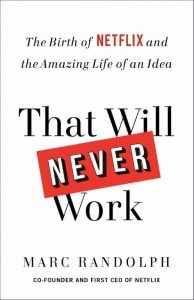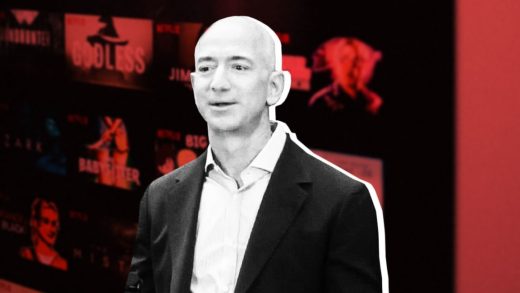How Jeff Bezos almost bought Netflix for about $15 million
When he spoke, I noticed that unlike me, Jeff [Bezos] didn’t gesture with his hands. Instead, he used his head for emphasis, lifting his chin up for questions, dropping it down suddenly for emphasis. Twisting his head at a 45-degree angle meant he was curious. At thirty-four, his demeanor still retained a strong dose of “gee whiz” enthusiasm, but all the childlike delight in the world couldn’t mask the analytical and ambitious brain constantly at work behind his unblinking eyes.
As I started to bring Jeff up to speed about Netflix, detailing the efforts we’d made to get the site off the ground, he peppered me with questions. How could I know that I had every DVD? How could I forecast expected turns? What did I expect the ratio of sales to rentals to be? But it was clear to me that what he was most excited about were the stories about launch day — particularly, the story of that ringing bell.
“That’s fantastic!” he exclaimed, so excited that he almost moved his hands. “We had the exact same thing! A bell that rang every time an order came in. I had to stop everyone from rushing over to the computer screens to see if they knew the customers.”
We traded beta names: he laughed at Kibble and told me that Amazon had originally called itself Cadabra, which he had thought evoked the sense of magic that online shopping could produce. “The problem is that Cadabra sounds a little too much like cadaver,” Bezos said, barking out a laugh.
Although Amazon was still relatively small in 1998, they already had over 600 employees and were doing more than $150 million in revenue. They were a real company now, with real pressures, but as Jeff and I chatted about our launch days, I could see in his face and hear in his voice that in many ways he missed those simpler, more exciting times.

Reed, on the other hand, was obviously bored. Forget “regret minimization framework” — Reed has never been someone who dwells, at all, on the past, so these stories of early struggles and frenetic launch days were of little interest to him. His placid stare had turned stony, and he was impatiently jogging his leg up and down. He wanted, I knew, to direct the conversation to the topics at hand: what Netflix was doing, how it could potentially fit with what Amazon was doing, and how some kind of “arrangement” could be a win-win situation for both parties.
I was just finishing bringing Jeff and Joy through my professional résumé, and was about to brief them on Christina, Te, and other key members of our team, when Reed decided he’d had enough.
“We don’t need to go through all this,” he said, exasperated. “What does this have to do with Netflix and Amazon and possible ways we can work together?”
Everyone stopped. It was quiet.
“Reed,” I said after a few seconds. “It’s obvious that Amazon is considering using Netflix to jump-start their entry into video. Our people would be a huge part of any possible acquisition, so it’s entirely appropriate for them to want to understand who we are.”
I was relieved when Joy jumped in to help. “Reed,” she suggested, “can you help me understand a bit better how you’re thinking about your unit economics?”
This was exactly what Reed wanted to hear, and with obvious relief that we were finally on topic, he began running Joy through the numbers.
An hour later, after the meeting was over and Bezos had headed back to his office, Joy lingered behind to wrap things up. “I’m very impressed with what you’ve accomplished,” she started, “and I think there is lots of potential for a strong partnership to jump-start our entry into video. But . . .”
Now, let me interject something here. I’m not a “but” man. Nothing good ever comes of that word. This time was no exception.
“But,” Joy continued, “if we elect to continue down this path, we’re probably going to land somewhere in the low eight figures.”
When someone uses the term “eight figures,” they are referring to digits. Eight figures translates to tens of millions of dollars. When someone uses “low eight figures,” that means barely eight figures. That means probably something between $14 million and $16 million.
That would have been a pretty good outcome for me, since at the time, I owned about 30 percent of the company. Thirty percent of $15 million is a pretty nice return for twelve months of work — particularly when your wife is broadly hinting that it might be time to pull the kids out of private school, sell the house, and move to Montana.
But for Reed, it wasn’t enough. He owned the other 70 percent of the company, but he’d also invested $2 million in it. And he was fresh off the Pure Atria IPO. He was already an “eight-figure guy.” A high- eight-figure guy.
Excerpted from: That Will Never Work: The Birth of Netflix and The Amazing Life of an Idea by Marc Randolph. Copyright © by Marc Randolph. Published by arrangement with Little, Brown and Company.
(16)



